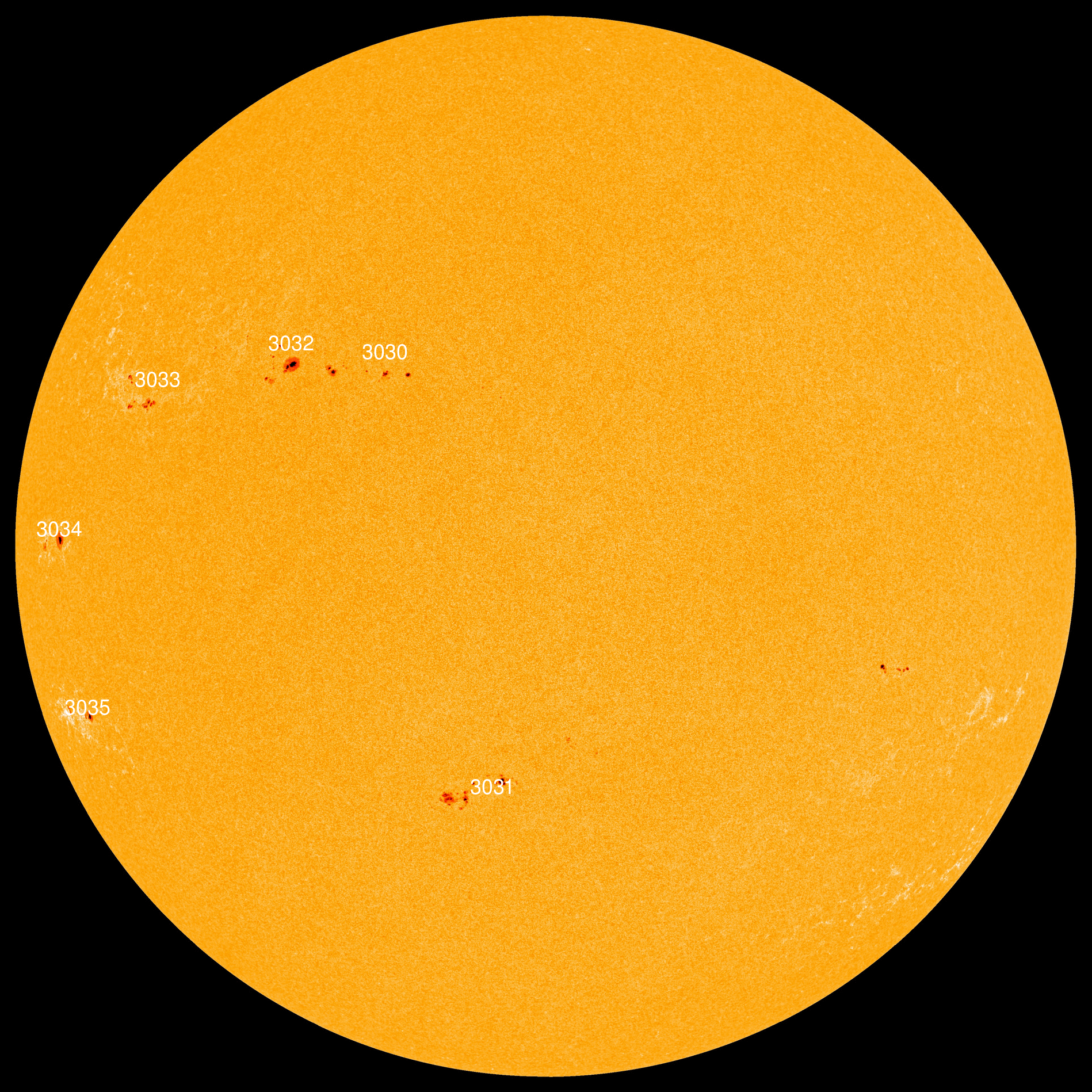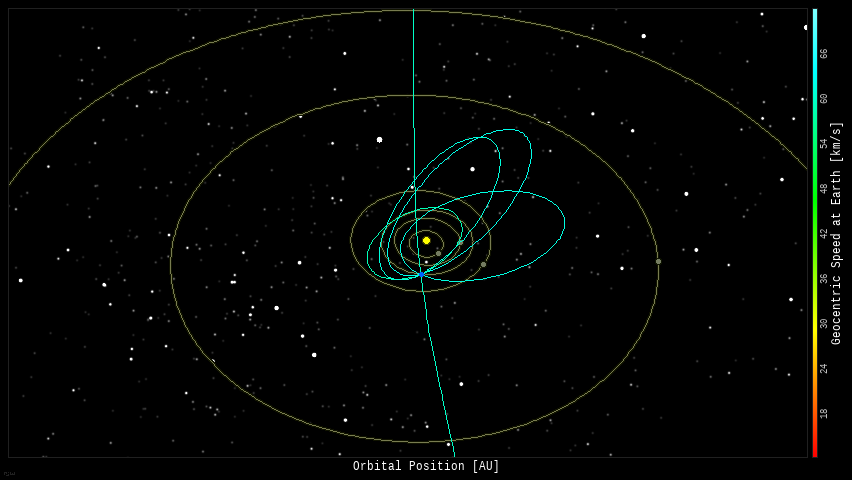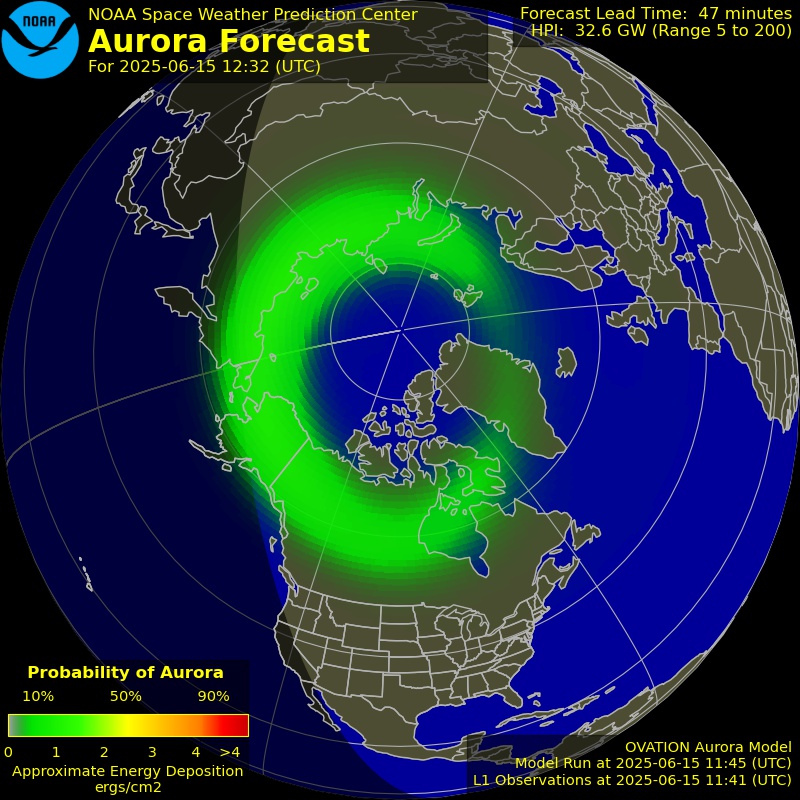Tucson Meteor Cams
In case you missed my teaser post about the new meteor cameras in the Tucson area:

Venus, Jupiter and Mars appear in the eastern predawn sky all week.

Mercury joins Venus, Mars and Jupiter appear in the eastern predawn sky early next week.

The Moon appears in the middle of the constellation Sagittarius in the southern sky in the early morning hours on June 15th.

The Moon appears near Saturn in the southeastern sky in the early morning hours on June 18th.


- The Full Moon occurs on June 14th – rising at sunset, visible high in the sky around midnight, and visible all night.
- After June 14th, the Moon will be a Waning Gibbous – rising after sunset, visible high in the sky after midnight, and visible to the southwest after sunrise.
- The Third Quarter Moon occurs on June 20th – rising around midnight, and visible to the south after sunrise.
If you click on the Moon image above, or click this link, you will go to NASA’s Moon Phase and Libration, 2022 page – it will show you what the Moon looks like right now. If you click the image on that page, you will download a high-rez TIFF image annotated with the names of prominent features – helpful for logging your lunar observations!
Moon News

The Sun has six named sunspots – up from four last week.
Spaceweather.com says: “Sunspot group AR3032 (sandwiched between 3030 and 3033) has a ‘beta-gamma’ magnetic field that harbors energy for M-class solar flares.” Also: “A CME launched by yesterday’s slow-motion solar flare is expected to pass near Earth on June 15th. Geomagnetic storms are possible if the CME makes contact. NOAA forecasters say minor G1-class storms are likely, with a chance for G2 (moderate) and a slight chance of G3 (strong) storms.”

Videos courtesy of NASA/SDO and the AIA, EVE, and HMI science teams.
You can view the Sun in near real-time, in multiple frequencies here: SDO-The Sun Now.
You can create your own time-lapse movies of the Sun here: AIA/HMI Browse Data.
You can browse all the SDO images of the Sun from 2010 to the present here: Browse SDO archive.
Amateur Solar Astrophotography

Solar Corona
Solar wind speed is 472.3 km/sec ▲ with a density of 7.43 protons/cm3 ▲ at 1217 UT.
Click here to see a near real-time animation of the corona and solar wind from the Solar & Heliospheric Observatory (SOHO).
Sun News:
BIG CME!

- Near-Earth Objects (NEOs) discovered this month: 53, this year: 1303 (+59), all time: 29,227 (+58)
- Potentially Hazardous Asteroids (PHAs): 2270 (+5 updated 2022-06-14)
- Total Minor Planets discovered (MPC): 1,207,476 (-338 updated 2022-06-14)
Upcoming Earth-asteroid encounters:
| Asteroid | Date(UT) | Miss Distance | Velocity (km/s) | Diameter (m) |
| 2022 LC2 | 2022-Jun-15 | 10.1 LD | 10.2 | 29 |
| 2022 LA3 | 2022-Jun-18 | 7.4 LD | 7.2 | 21 |
| 2022 LX | 2022-Jun-22 | 10.4 LD | 10.1 | 35 |
| 2022 LS1 | 2022-Jun-23 | 18.9 LD | 10 | 35 |
| 2022 LB2 | 2022-Jun-25 | 5 LD | 8.3 | 23 |
| 2022 LV | 2022-Jun-25 | 2 LD | 3.6 | 22 |
| 2015 WP2 | 2022-Jun-26 | 18.5 LD | 11.4 | 3 |
| 2022 JE1 | 2022-Jul-03 | 8.6 LD | 5.6 | 74 |
| 2021 EL4 | 2022-Jul-05 | 19.8 LD | 9.5 | 25 |
| 2015 OQ21 | 2022-Jul-12 | 18.3 LD | 6.6 | 9 |
| 2022 LR1 | 2022-Jul-16 | 9.3 LD | 4.7 | 42 |
| 2022 KY4 | 2022-Jul-17 | 15.9 LD | 7.6 | 91 |
| 2021 OT | 2022-Jul-17 | 16.5 LD | 11.2 | 20 |
| 349068 | 2022-Jul-19 | 17.6 LD | 22.9 | 756 |
| 2017 RX2 | 2022-Jul-24 | 17.2 LD | 14.2 | 17 |
| 2016 CZ31 | 2022-Jul-29 | 7 LD | 15.6 | 129 |
| 531944 | 2022-Jul-30 | 18.2 LD | 5.9 | 192 |
| 2020 PP1 | 2022-Aug-01 | 13.1 LD | 3.7 | 17 |
| 2020 PN1 | 2022-Aug-03 | 9.7 LD | 4.6 | 29 |
WGSBN Bulletin 2, #8 – released June 14th with 18 newly named asteroids.
Asteroid News:

On June 13, 2022, the NASA All Sky Fireball Network reported 5 fireballs!
(5 sporadics)

Fireball News:
If you see a bright meteor or a fireball, please REPORT IT to the American Meteor Society and the International Meteor Organization!

Position of the planets & several spacecraft in the inner solar system on June 14nd:

Position of the planets in the middle solar system – June 2022:

Position of the planets in the outer solar system first half of 2022:

Solar System News

See a list of current NASA missions here: https://www.jpl.nasa.gov/missions?mission_status=current

ex·o·plan·et /ˈeksōˌplanət/, noun: a planet orbiting a star other than the Sun.
* Confirmed Planets Discovered by TESS refers to the number planets that have been published in the refereed astronomical literature.
* TESS Project Candidates refers to the total number of transit-like events that appear to be astrophysical in origin, including false positives as identified by the TESS Project.
* TESS Project Candidates Yet To Be Confirmed refers to the number of TESS Project Candidates that have not yet been dispositioned as a Confirmed Planet or False Positive.
Exoplanet News:
June 9, 2022
Nine New Planets, Including Two From Gaia
Almost 8.5 years after its launch with the goal to create the largest and most precise 3-D map of the Milky Way galaxy, the Global Astrometric Interferometer for Astrophysics (Gaia) mission has detected two confirmed transiting exoplanets: Gaia-1 b and Gaia-2 b. Read the discovery paper by Panahi et al. (2022).
Pro Tip: Other Gaia data in the archive include distances and magnitudes in the Planetary Systems and Planetary Systems Composite Parameters tables, and Gaia and HIPPARCOS data are used to calculate masses of known planets, such as bet Pic b. Also, ExoFOP links to Gaia data for each star (currently DR2, and soon DR3).
There are seven other new planets in the archive this week: TOI-1107 b, Ross 508 b, HD 83443 c, mu 2 Sco b, and HD 28109 b, c, & d. – NASA Exoplanet Archive

Copper Harbor! My old stomping grounds! This is where my wife and I saw aurora all the time!

SpaceWeather.com Realtime Aurora Gallery: https://spaceweathergallery.com/aurora_gallery.html
Latest Aurora Oval Forecast

- Visit an International Dark Sky Park: https://www.darksky.org/our-work/conservation/idsp/parks/
- If you live in Michigan, visit the Michigan Dark Skies site: https://sites.lsa.umich.edu/darkskies/

Impromptu STEM this kid will never forget!
Messier Tour: M19
In the above image, the NASA/ESA Hubble Space Telescope has captured the brilliance of the compact centre of Messier 70, a globular cluster. Quarters are always tight in globular clusters, where the mutual hold of gravity binds together hundreds of thousands of stars in a small region of space. Having this many shining stars piled on top of one another from our perspective makes globular clusters a popular target for amateur skywatchers and scientists alike. Messier 70 offers a special case because it has undergone what is known as a core collapse. In these clusters, even more stars squeeze into the object’s core than on average, such that the brightness of the cluster increases steadily towards its centre.
The legions of stars in a globular cluster orbit about a shared centre of gravity. Some stars maintain relatively circular orbits, while others loop out into the cluster’s fringes. As the stars interact with each other over time, lighter stars tend to pick up speed and migrate out toward the cluster’s edges, while the heavier stars slow and congregate in orbits toward the centre. This huddling effect produces the denser, brighter centres characteristic of core-collapsed clusters. About a fifth of the more than 150 globular clusters in the Milky Way have undergone a core collapse.
Although many globular clusters call the galaxy’s edges home, Messier 70 orbits close to the Milky Way’s centre, around 30 000 light-years away from the Solar System. It is remarkable that Messier 70 has held together so well, given the strong gravitational pull of the Milky Way’s hub.
Messier 70 is only about 68 light-years in diameter and can be seen, albeit very faintly, with binoculars in dark skies in the constellation of Sagittarius (The Archer). French astronomer Charles Messier documented the object in 1780 as the seventieth entry in his famous astronomical catalogue.
This picture was obtained with the Wide Field Camera of Hubble’s Advanced Camera for Surveys. The field of view is around 3.3 by 3.3 arcminutes. – ESA/NASA
Messier 19 appears as a fuzzy patch of light in 2-inch binoculars. Amateur telescopes will show a cluster about 6 arc minutes in size visually and 13.5 arc minutes photographically. The cluster’s elliptical shape is evident even in small instruments. A 10-inch telescope, on the other hand, will reveal the cluster’s bright core about 3 by 4 arc minutes in apparent size and a halo occupying a region 5 by 7 arc minutes in size. The best time of year to see the cluster is in the summer months.
Messier 19 contains a number of variable stars, including four Cepheids and RV Tauri type stars, and at least one RR Lyrae type variable with a known pulsation period. The cluster has four confirmed RR Lyrae variables.
The brightest stars in the cluster are 14th magnitude and the average visual magnitude of the 25 brightest stars is 14.8. – messier-objects.com

Here’s my obligatory “What would a planet look like if it were near that Messier object” pic:
Globular cluster M19 and the disk of the Milky Way rising over the horizon of a dark sky site on a hypothetical life-bearing exoplanet – best viewed in a dark room.

Cover Image: Messier 19. Credit: Credit: ESA/Hubble & NASA
Messier Object List: [Link]
Software Apps used for this post:
NASA Eyes on the Solar System: an immersive 3D solar system and space mission simulator – free for the PC /MAC.
Stellarium: a free web-based planetarium app. It’s a great tool for planning observing sessions. Latest update released on April 16, 2022.
SpaceEngine – Explore the universe in 3D and VR! Latest update released on May 16, 2022.
Worldwide Telescope – operated by the American Astronomical Society (AAS). Latest update released on March 31, 2022.






